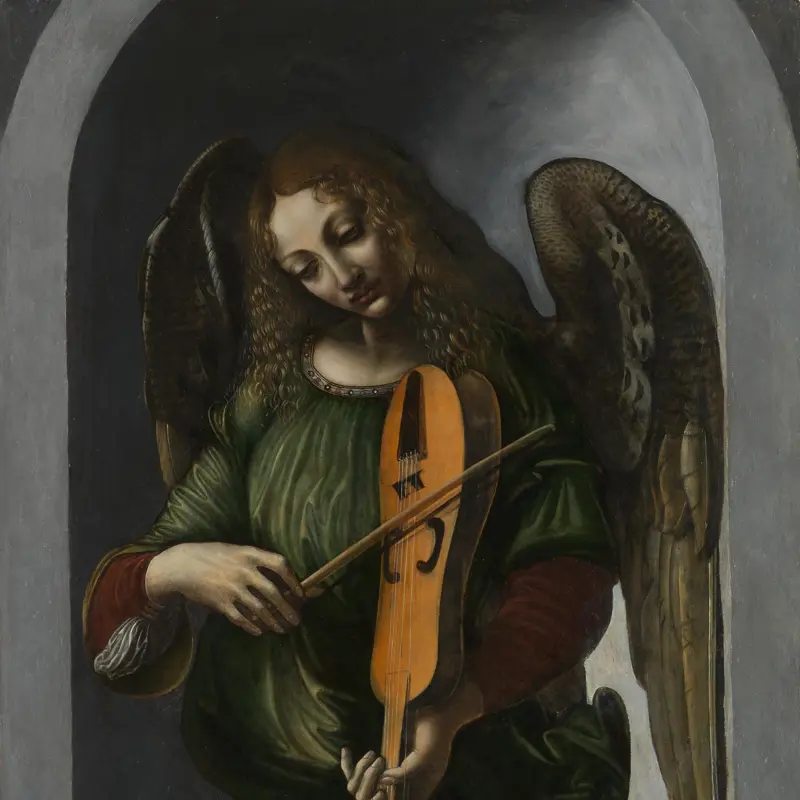Follower of Leonardo da Vinci, 'The Virgin and Child', after 1510
About the work
Overview
Leonardo da Vinci is one of the most emulated and copied painters in history, and many artists have tried to reproduce his painting style. Most of them, like the artist who made this painting, did not come anywhere close to matching his skill. Paintings like this fulfilled a demand for pictures in Leonardo’s style, especially in Milan after his departure in 1513, which is around the time this work was made.
The multiple supple folds of the draperies, the muted colours and the generally dark atmosphere from which the figures seem to emerge reflect Leonardo’s works of the early years of the sixteenth century. The composition, however, is most closely based upon a picture made by Leonardo in the early 1490s, The Madonna Litta (State Hermitage Museum, St Petersburg). It shows the Virgin feeding the infant Christ, his little legs wriggling as he grasps her breast in his mouth.
Key facts
Details
- Full title
- The Virgin and Child
- Artist
- Follower of Leonardo da Vinci
- Artist dates
- 1452 - 1519
- Date made
- after 1510
- Medium and support
- oil on wood
- Dimensions
- 59.7 × 43.8 cm
- Acquisition credit
- Bought, 1860
- Inventory number
- NG1300
- Location
- Not on display
- Collection
- Main Collection
Provenance
Additional information
Text extracted from the ‘Provenance’ section of the catalogue entry in Martin Davies, ‘National Gallery Catalogues: The Earlier Italian Schools’, London 1986; for further information, see the full catalogue entry.
Bibliography
-
1951Davies, Martin, National Gallery Catalogues: The Earlier Italian Schools, London 1951
-
1986Davies, Martin, National Gallery Catalogues: The Earlier Italian Schools, revised edn, London 1986
-
2001
C. Baker and T. Henry, The National Gallery: Complete Illustrated Catalogue, London 2001
About this record
If you know more about this work or have spotted an error, please contact us. Please note that exhibition histories are listed from 2009 onwards. Bibliographies may not be complete; more comprehensive information is available in the National Gallery Library.



